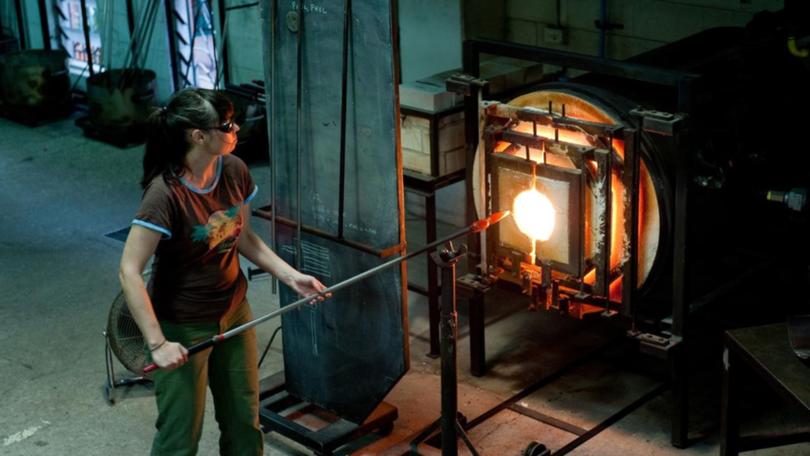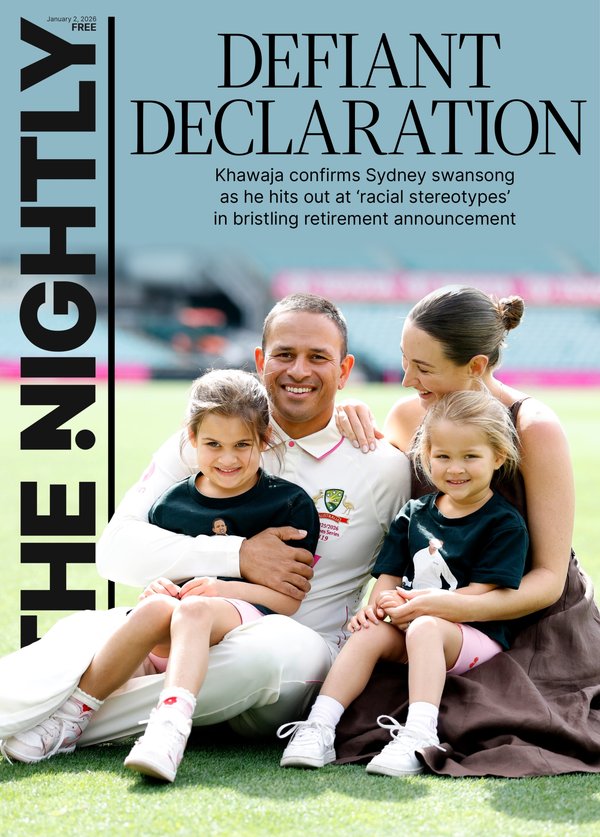Artist Yhonnie Scarce's glass clouds bring dark truths into the light

Artist Yhonnie Scarce is known internationally for her installations of cascading glass clouds, made from thousands of individually hand-blown pieces.
On first encounter they are beautiful, like oversized chandeliers, but they are also a disquieting response to nuclear testing in Australia and the impacts of colonisation.
Three of these massive clouds - the largest made from 2000 glass pieces - feature in the biggest survey show of Scarce’s career, at the Art Gallery of Western Australia as part of the Perth Festival from Friday.
Sign up to The Nightly's newsletters.
Get the first look at the digital newspaper, curated daily stories and breaking headlines delivered to your inbox.
By continuing you agree to our Terms and Privacy Policy.The Kokatha and Nukunu artist has shown work in New York, Paris, Berlin and London, but seeing decades of her artworks set up in Perth has been an emotional experience, the artist told AAP.
“There’s a lot of the works in the exhibition I haven’t seen for a long time, so it’s like revisiting old friends or family,” she said.
The show spans 20 years of her career starting in 2004, from intimate early works to more recent glass installations measuring up to seven metres, as well as photographs, found objects, and works built from corrugated iron.
Scarce was born in the South Australian town of Woomera, and her family was directly affected by nuclear testing in the nearby prohibited area, mostly at Maralinga, by the British and Australian governments between 1952 and 1963.
But the extent of the contamination wasn’t known until the 1980s, just before the land was to be returned to traditional owners.
Scarce says it’s important to remember that because Aboriginal people were not considered citizens at the time the testing took place, the real death toll from radioactivity remains unknown.
“The amount of deaths that resulted from that is phenomenal, I think we will never really know how many people died out there,” she said.
In her major 2017 glass work Death Zephyr, Scarce uses small glass yams to create a vast suspended form, suggesting poisonous radioactive clouds, with each piece perhaps representing a person.
Scarce travels to Woomera at lease once every year, visiting its historic missile park, and planning more large scale artworks.
Another piece in the survey show refers to mining operations at BHP’s Olympic Dam, near Woomera, which holds the world’s largest deposit of uranium.
Hollowing Earth is made from uranium glass, which contains low levels of the radioactive mineral and was previously widely used to create yellow and green glass pieces that glowed in the dark.
The artwork is a series of blown forms of bush bananas, each savagely cut open - representing desecration of country, according to Scarce - and glowing green when the gallery is dark.
It’s not lost on Scarce that her exhibition is being held in Australia’s mining capital.
“Having works here that talk about mining and desecration of country as an after effect of uranium mining, it’ll be an interesting conversation for people here,” she said.
Following a long-running campaign, 2024 will be the first Perth Festival in almost 20 years without the backing of US fossil fuel giant Chevron. Activists promise other city arts institutions that rely on industry sponsorship are in its sights.
Yhonnie Scarce: The Light of Day runs from Friday until May 19. The Perth Festival runs from February 9 till March 3.
